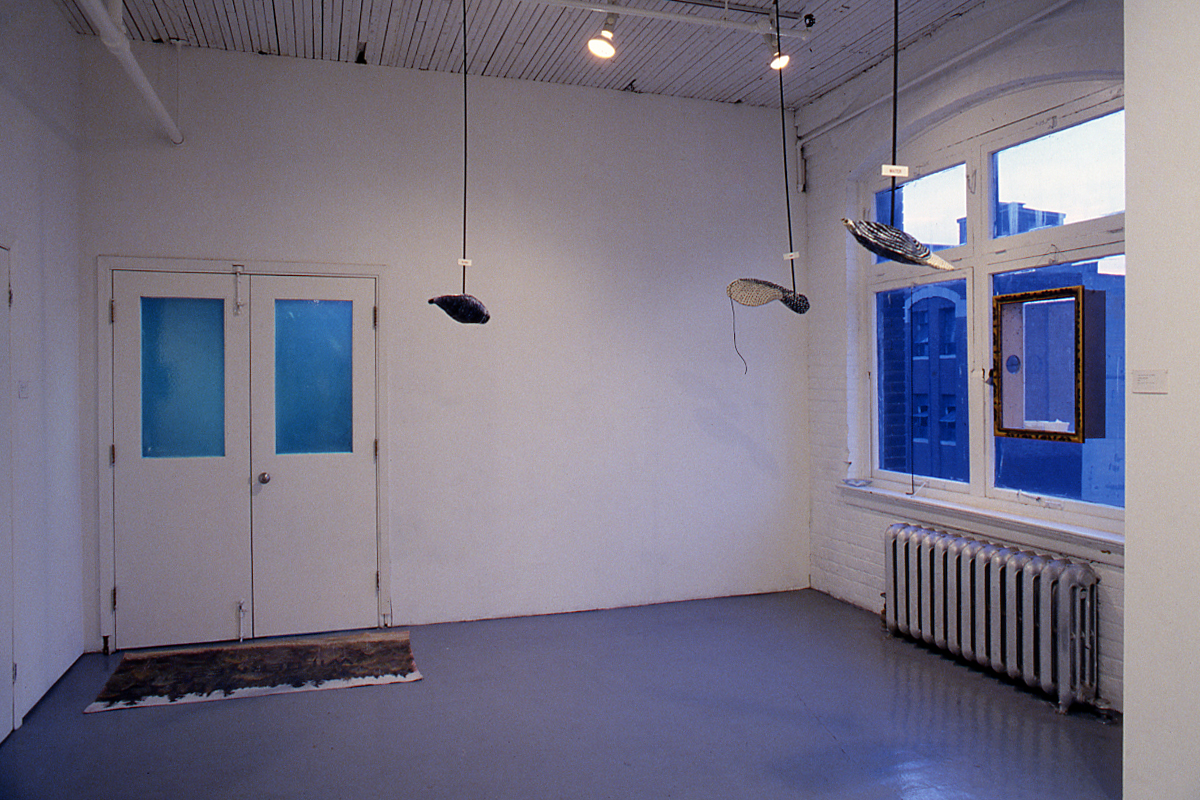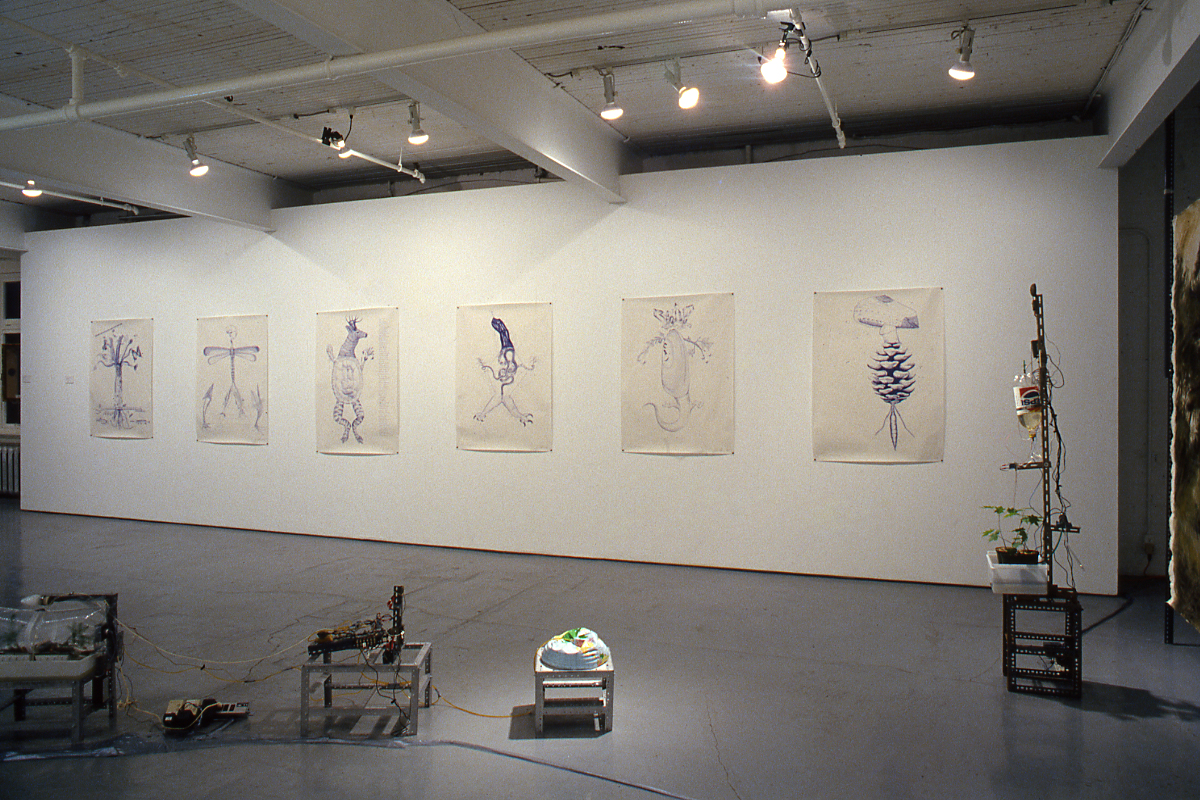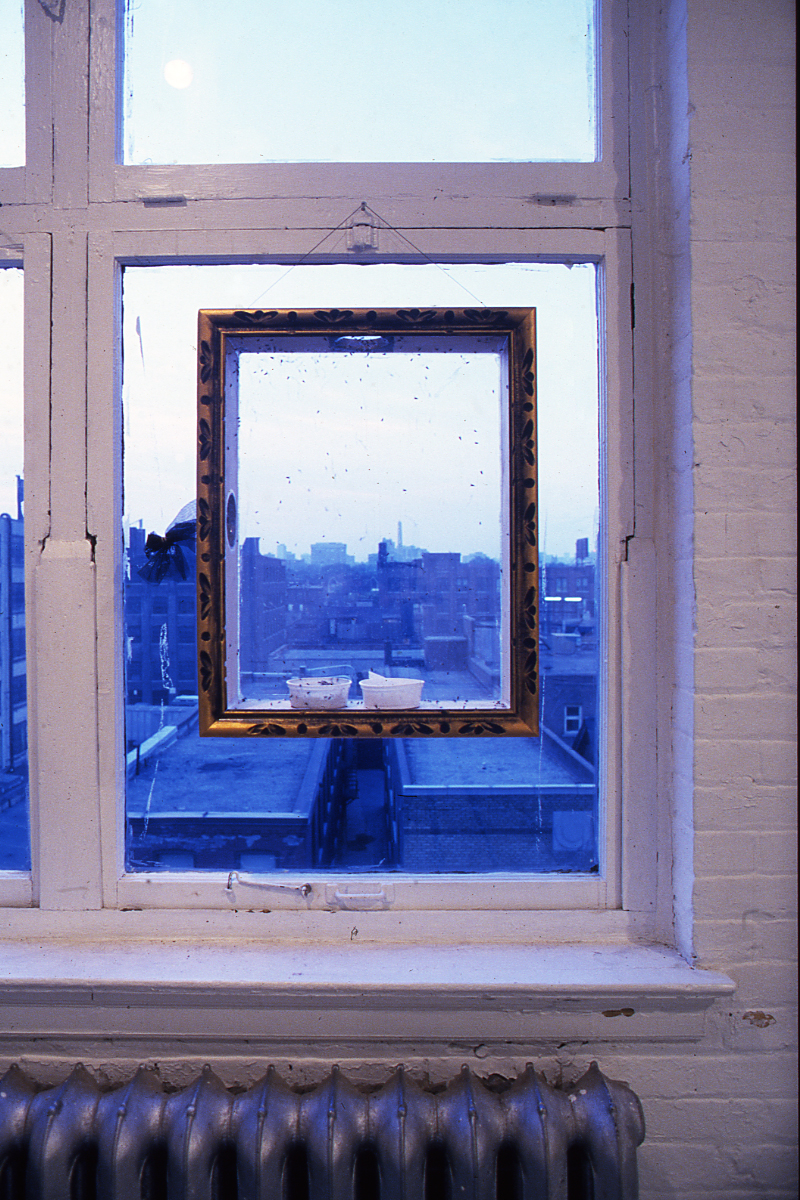West Gallery:
Opening June 28th at Mercer Union, Forest Models of the Universe presents collaborative installations by Toronto artists Janis Bowley and Oliver Kellhammer. Both artists are concerned with the relationship between our regional ecological foundation and cultural production. In this exhibition, Bowley and Kellhammer focus on the intrinsic ecological framework in which we live - the Great Lakes/Eastern Forest bio-region. Through the use of painted, electronic and mechanical constructions, some with small life forms, their works attempt to model and critique aspects of our local reality. Through these individual and collective explorations, Bowley and Kellhammer strive to enhance the relationship between our frequently antagonistic urban culture and the unique ecological foundation on which it is based. Forest Models of the Universe opens in Mercer Union's West Gallery Tuesday June 28, 8:00 pm and continues through Saturday July 23.
Group shows offer feast of fresh images-Land and other scapes revisited
John Bentley Mays
Globe & Mail, July 1988
Mercer Union's west gallery looks less like an art gallery these days than a high-school science fair. One display, controlled by electric gadgetry, features a drip of water falling intermittently from an up ended plastic Pepsi bottle onto perky maple seedlings, while another assembly involves a neon ring, more electric gadgetry, and some leeches with nothing to leech onto. (These hapless creatures, swimming around their tank, are more elegant than you might have imagined.) There are crickets in micro-environments consisting of plastic bags and life-support tubing, wiring and so forth, and quite a few fanciful drawings.
All this is the collaborative work of Janis Bowley and Oliver Kellhammer, two recent graduates of the Ontario College of Art, who have taken Ontario's natural environment as their object of concern and artistic topic. What they have done here is youthfully energetic and celebratory, but green in a way they probably don't intend. As eco-minded art of this sort goes, Bowley and Kellhammer's is not yet as bold as that of Noel Harding or the FastWurms group, or as wise as that of Joseph Beuys. You will get a kick out of the artists' humor, but you will probably not walk out with any more interest in the threatened abused Ontario environment than you brought with you. (The artists also have planted a garden in front of the Garnet Press/Gallery, to call attention to the lead pollution threatening to end the tradition of backyard vegetable patches in Toronto.)
Each of the eight buttery, harshly vivid paintings by Dan Hudson, installed in Mercer's east gallery, portrays someone eating, or, rather, captured at that precarious, self conscious instant when the morsel is just going into the mouth. The potential embarrassment of that instant seems to flicker like a cold psychological fire throughout the picture, in the aggressively brushed backgrounds, in the weird artificial lights (sour yellow, dead-flesh violet, plastic orange) Hudson has cast over his infants, adolescents, old ladies and so forth.
Sexual anxiety is the common denominator, the common human element, in Eric Fischl's painting of modern life; in Hudson's painting (which recalls Fischl's art in this way) the common element is the act of eating, which similarly symbolizes unfulfilled desire, explicit decla ration of need, and so forth. It will be interesting to see how far Hudson, whose makes his Toronto debut here, moves with his Fischl-like interest in making plain and vivid in art the tiny glitches and worries of intimate life.
Environmental art breaks new ground
The Toronto Star, July 8, 1988
by Christopher Hume
Now that artists have once again become keepers of the social conscience, they are devoting more of their creative efforts to ecological issues.
The trend is more-pronounced in European art but it's happening here too. In Toronto right now there are several exhibitions that deal, one way or another, with the destruction of the planet.
Two of the most notable--and diverse--are Breaking Ground, a remarkable selection of color Photographs by Edward Burtynsky, and Forest Models Of the Universe, a joint installation by Janis Bowley and Oliver Kellhammer.
The first, on display at the Toronto Photographers Workshop, 80 Spadina Ave., until July 31, ranks as one of the most truly memorable exhibitions of its sort seen in this city. Burtynsky'sinterest lies mainly in the effects of industrialization on the landscape.
Working with a large format (4 x 5-inch) camera, he is able to take pictures of incredible precision. The longer one looks into these sometimes surreal images, the more one sees.
Born in St. Catharines in 1955, Burtynsky studied at Ryerson Polytechnical Institute before setting out on his North American odyssey. A photograph shot at a coal mine in Pennsylvania triggered his imagmation and led ultimately to an obsessive exploration of open-pit mines, railcuts and homesteads.
Burtynsky's method of operation looks simple enough; he selects a view and shoots, regardless of how confused or chaotic it may be. Nothing it not democratic in his approach, he includes everything. Although some of his photos have an obvlous centre of attention, a good many don't. They read more like accumulations of details, sometimes very messy but always true to life, and all equally in focus.
Perhaps his most impressive, certainly most monumental, photographs are of mines, especially the Kennecott Copper Mine in Utah. This vast hole, gouged out of the ground in a neat, almost delicate, spiral pattern, could be an ulcer on the surface of the earth.
And yet it also possesses an unexpected beauty. Burtynsky's special ability to extract the exquisite from devastation doesn't diminish the poignancy of the images.
He takes pictures like an Ansel Adams with color, but selectsimages with an almost Blakean sensibility. But being a photographer, he's naturally more attracted to bright rather than dark Satanic mills.
In one series, he shot stretches of the CN track as it winds through the Rockies. By concentrating on wide vistas, he turns the railway, the greatest Canadian engineering feat of the l9th century, into a something that seems tenuous, even flimsy.
These thin steel ribbons, carved out of mountain sides, should have been washed away by rockslides and gravity itself.
More complex and ambivalent are his photographs of homesteads in rural B.C. Depicted in all their clutter, they are a blight on the landscape as well as a reassuring sign of domesticity. There's nothing sentimental or romantic about Burtynsky's eye; it takes in all it surveys without regard for the artiness of the finished product.
By contrast, Bowley and Kellhammer's collaborative installation, which can be seen at Mercer Union, 333 Adelaide St. W., until July 23, is much more barbed --yet humorous--in its critique of our treatment of the environment.
Consisting of all kinds of obscure gadgets, their pieces whir, beep and buzz as they deliver their dire message.
"As Canadian artists residing in Southern Ontario, we have chosen to focus our energies on the ecological framework on which all our local realities rest," they write in their statement.
To this end, they have constructed elaborate mini-eco systems in which, for example, crickets live in plastic bags sustained by air supplied by tiny electric pumps. In the work The Choice Of A New Generation? drops of water fall onto three maple tree seedlings from an upside-down Pepsi bottle. Every time the water hits, a buzzer goes off, a reminder of the constant destruction being done through acid rain.
Kellhammer is the tinkerer of the pair, Bowley is the painter.Together, they manage to make things that move as well as things that are moving. Through their models, they want to force viewers to become more aware of the fragility of the environment as well as of how dependent it has become on technological systems imposed by man.
Despite the humor of their installation, the content is deadly serious.



